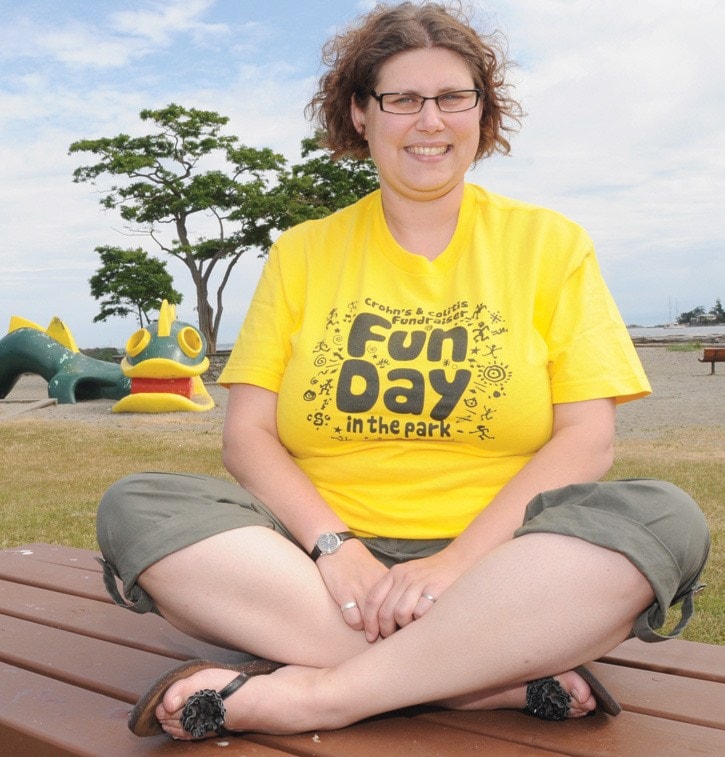By the time Nadine King was finally diagnosed with Crohn’s disease, she was averaging 30 trips to the bathroom daily.
It’s not information many sufferers of inflammatory bowel disease are ready to share, but for the president of the local chapter of the Crohn’s and Colitis Foundation of Canada, openness and education is key.
“A lot of people are concerned about telling their bosses because they’ll be looked at as someone who’d sickly and less reliable,” she said. “A lot of people never even tell their friends because they’re so ashamed of it, but I’ve never thought of it that way.”
Crohn’s causes inflammation and ulcers on any area of the gastrointestinal tract, from mouth to anus, but is usually located in the lower part of the small bowel and the upper end of the colon. Symptoms include abdominal pain, cramping, diarrhea, nausea, vomiting, weight loss and lack of energy. Colitis generally brings about similar symptoms as Crohn’s, but typically only affects only the colon. One of the hallmark’s of Crohn’s disease are false urges to use the washroom.
Like others with Crohn’s or ulcerative colitis – both called inflammatory bowel disease, the latter of which King was initially misdiagnosed with – she experienced symptoms of gastrointestinal upset for years. The flare culminated in months of bloody stool and false urges prior to a diagnoses. It left her sleep-deprived and completely depleted of iron stores, yet she continued to work full-time as a transportation engineer.
“I just willed through it and carried on,” King said.
Through her doctor, she got in touch with the Victoria chapter of the Crohn’s and Colitis Foundation of Canada and later became president of the non-profit organization. The group hosts several events throughout the year in Greater Victoria with the goal of raising awareness, sharing information and raising funding for medical research. Their biggest fundraising event is this weekend’s Fun Day in the Park, which last year raised more than $8,700 towards the national foundation. This year’s goal is $10,000.
After running the gamut of medications – including anti-inflammatory, immune suppressants and steroid medications – King is managing her symptoms through the intravenously-administered biological drug, Humira, but it’s not a cure.
“There’s always the unknown of when it’s going to come back – because it is going to come back – whether it’s in months or years.”
Crohn’s affects more women than men and is most common in North America and Europe. The disease tends to affect younger people, with most of the diagnoses given between the age of 15 and 30 years-old (King was 26).
nnorth@saanichnews.com
Fun Day in the Park
What: A free concert (with Anjopa, the Paul Wainwright Band and The Archers); games; silent auction; massage therapy; reflexology; face-painting; and a bouncy castle – all to benefit The Crohn’s and Colitis Foundation of Canada’s research and education.
When: 11-4:30 p.m. July 23
Where: Gyro Park, Cadboro Bay
Closer to a cure
The Department of Paediatric Surgery at Christchurch Hospital in New Zealand reported last week that it has successfully grown contracting smooth muscle bowel cells.
The July 15 announcement is being lauded as a possible cure for people with Crohn’s as well as those born with intestinal abnormalities.
Spencer Beasley, head of the paediatric surgery unit, said the discovery could eventually provide an alternative to small bowel transplantation and avoid all the issues of inadequate availability of donors, as well as all the problems around rejection and immunosuppression.
